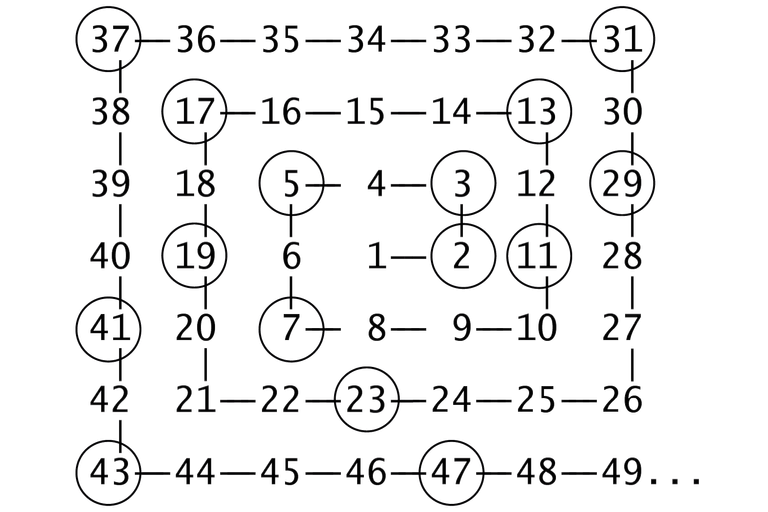Mathematics and sciences have really interesting ways of working, Sometimes boredom can get us to discover some very interesting things, things that can revolutionize the world in certain cases, but before getting into the discovery that this great scientist made, I will show you who was Stanisław Ulam

[image Source: Wikimedia-Commons-Domain Mark 1.0]
Stanisław Ulam was a Polish-American scientist in the fields of mathematics and nuclear physics. He participated in the Manhattan Project, originated the Teller–Ulam design of thermonuclear weapons, discovered the concept of cellular automaton, invented the Monte Carlo method of computation, and suggested nuclear pulse propulsion. In pure and applied mathematics, he proved some theorems and proposed several conjectures. Born into a wealthy Polish Jewish family, Ulam studied mathematics at the Lwów Polytechnic Institute, where he earned his PhD in 1933 under the supervision of Kazimierz Kuratowski. In 1935, John von Neumann, whom Ulam had met in Warsaw, invited him to come to the Institute for Advanced Study in Princeton, New Jersey, for a few months. From 1936 to 1939, he spent summers in Poland and academic years at Harvard University in Cambridge, Massachusetts, where he worked to establish important results regarding ergodic theory. On 20 August 1939, he sailed for the United States for the last time with his 17-year-old brother Adam Ulam. He became an assistant professor at the University of Wisconsin–Madison in 1940, and a United States citizen in 1941.
Source
Now, we know who was ulam and what he did in the field of nuclear physics, now let's continue with his interesting discovery.

[image Source: Wikimedia-Commons- Public Domain, version 1.2]
Stanisław Marcin Ulam made a very interesting discovery in 1963. Ulam had attended a scientific conference whose content was absolutely boring. He had paper and pencil, so he started scribbling things, as any of us does while talking on the phone or - like Ulam - he is thinking of anything. But unlike simple mortals, Stanisław was a mathematician of race, so instead of puppets or little hearts he drew numbers. Without any preconceived plan, he wrote the whole numbers along a spiral, as seen in the image

[image Source: Wikimedia-Commons- Public Domain, version 1.2]
After drawing a few turns of numbers, and seeing that the conference followed its course without touching a topic that was of interest, began to dial the prime numbers. He pointed to the 2, then the 3, the 5 and so, until after having marked a few dozens of numbers, he found a pattern similar to the following:
He quickly noticed that the numbers that remained on the spiral - the "primes" - were grouped according to diagonal patterns. Although it was still difficult to predict where the next cousin would "fall", the appearance of the resulting graph was clearly very different from a random distribution. It is easy to see that the numbers are grouped in diagonal lines of different lengths. Since all the prime numbers (if we leave aside the 2) are odd and that in the spiral of Ulam some diagonals contain odd numbers and other pairs, the prime numbers fall in alternating diagonals. Given their irregular nature, these diagonals contain different proportions of prime numbers.
Using computers, "Ulam spirals" of enormous sizes have been graphed. Invariably, and no matter how big the spiral is done, the mentioned diagonals keep appearing. This happens even when the central number is not one. In fact, any number can be used as the start of the spiral and the result is always similar. As is logical, the spirals generated when taking different numbers are not identical, but they always show those diagonals. The "work" that Ulam did while getting bored at that conference quickly became famous among his colleagues. So much so, that the cover of the famous Scientific American magazine of March 1964 had, as an outstanding article, about the spiral

[image Source: Wikimedia-Commons- Public Domain, version 1.2]
A fact
In spite of everything, the contribution of Ulam has not yet served to develop any revolutionary application of prime numbers or to find a faster system that allows factoring a number in less time. However, specialists do not lose hope that, someday, this spiral will shed light on the nature of these intriguing numbers.
References
Disclaimer: All the images used are correctly labeled for reuse.

very interesting! good post.